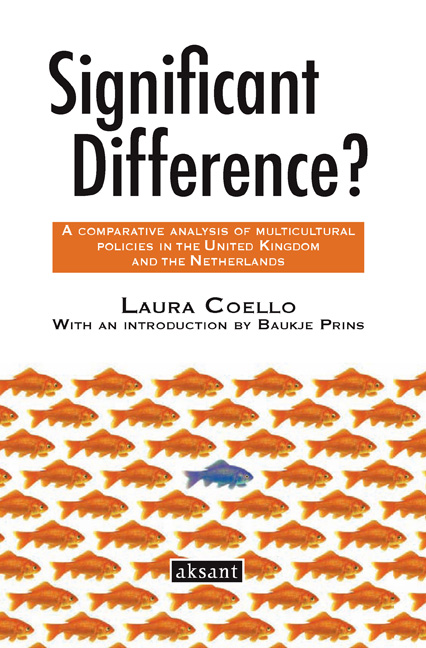1 - The choice in policies: Assimilation, Integration and Multiculturalism
Published online by Cambridge University Press: 20 January 2021
Summary
The definition of minority is not a simple one. Minorities can be defined in numerical terms or in the access of a group to economic and political power. The controversy is that in some cases when a group is officially defined ‘minority’, governments need to grant this group special attention, privileges, etc. Here, the term minority is used for immigrant groups (regardless of their number) and will therefore sometimes be replaced by the term ‘immigrants’. The ‘dominant’ group or society does not need to be native, as is the case in the USA, but in the case of the UK and the Netherlands it is. Therefore, the terms dominant, native or host society will be used.
There is a wide array of methods that try to manage differences between groups, but the most cited ones are assimilation, integration and multiculturalism. Although obviously not a choice, neglect has had consequences, such as the alienation and separation of, in general, the minority groups. The differences are not eliminated, nor managed; newcomers are ignored and become (physically) separated groups. It has been practised in Germany and Spain, where it resulted in the development of parallel societies.
Often in debates, the differences between assimilation, integration and multiculturalism are vaguely understood. This blurred understanding is due to the fact that the strict application of one or the other strategy is virtually impossible and governments have often used assimilation but with many elements of integration or vice-versa. Theoretically, the difference lies in the possibility people have to manifest their differences in the private and the public sphere. The following table represents these 3 options more clearly. Based on assimilation, which literally means “making alike”, policies are made to “try to erode the cultural differences between groups” in the public and the private sphere. It aims to make the newcomer indistinguishable from the dominant host society. To try to achieve this, assimilation has sometimes been coercive as in the dealings of American newcomers with the Native Americans.
In less coercive forms of assimilation, the use of a minority's language and the expression of its culture in the public arena were either prohibited or frowned upon. In the public sphere, people had to manifest themselves according to the dominant culture. The natural result of well-enforced assimilation is acculturation: the newcomers or the minority assume the culture of the dominant ethnicity or group.
- Type
- Chapter
- Information
- Significant difference? A comparative analysis of multicultural policies in the United Kingdom and the Netherlands , pp. 15 - 20Publisher: Amsterdam University PressPrint publication year: 2010



